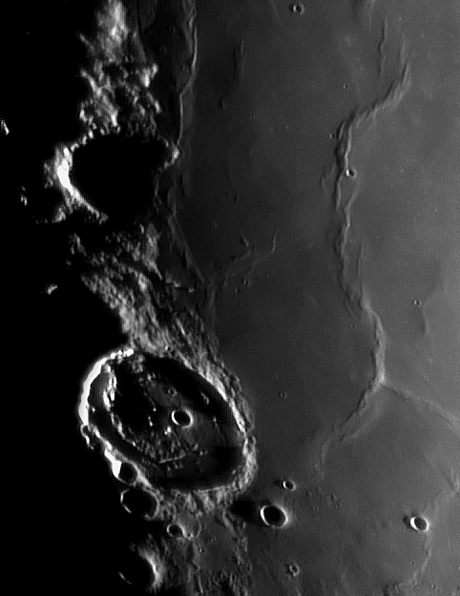
image by Tamas Ladanyi, Castor, Hungary
Posidonius is one of my favorite craters. Somehow it captures the essence of the lunar observing experience, with the smooth mare of Serenitatis edging around the rim of the 95 km wide crater. Tamas’ very low illumination image beautifully shows Sunset on the crater and details of its topography. With the low lighting, the western (right, south up) walls cast consistently long shadows, except where the rim may disappear. There still is no orbital imagery good enough to show convincingly if the rim is breached, but Tamas’ image has no shadow at the lowest spot, the best evidence that a small piece of the rim is missing and that lava poured out of Posidonius onto the mare. Shadowing also reveals that the south-central part of the floor is domed, and finally, more shadows along the east side of the curved ridge confirm what higher Sun views make clear - the eastern part of the floor is tilted upward. One last thing, Tamas is the first imager from Hungary to be featured on LPOD, but not the first nor even the second Hungarian LPOD!
Technical Details:
12 Oct 2006, 2:22 UT. 25 cm Cassagrain @ f/14.2 + ATK 1 HS CCD camera + Registax + PS CS2. 47°06′17″N, 17°54′31″E, 737 ft elevation.
Related Links:
Rükl plates 14 & 24
Tamas’ website. Go to the bottom of Bemutatkozom option to see Tamas and his impressive telescope.
Yesterday's LPOD: Upside Down Twins
Tomorrow's LPOD: Delayed Pleasure
COMMENTS?
Register, Log in, and join in the comments.



